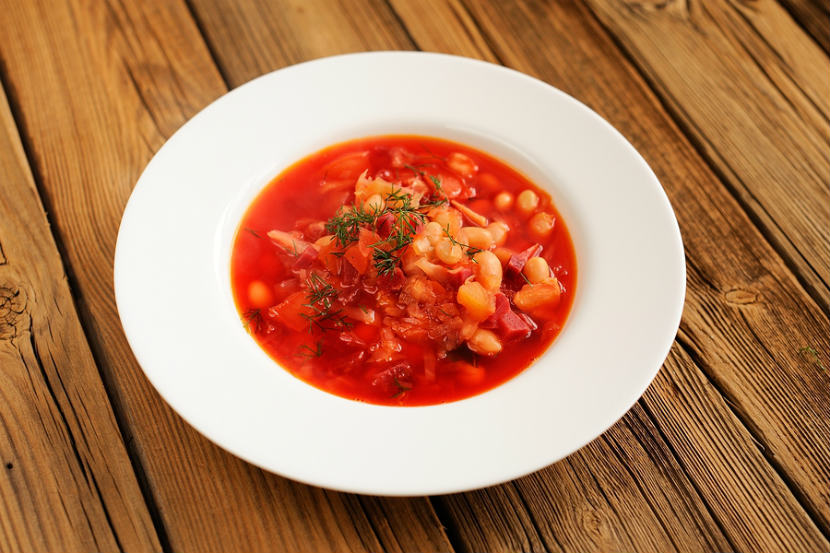
Nothing beats a bowl of warm soup that smells and tastes like home. Soups are enjoyed the world over and for good reason. Making homemade soup costs less, and is healthier and tastier than most soups you buy. Once you know how to make a healthy soup, you can get creative with all types of ingredients and spices.
Making healthy soup is easy!
1. Make the stock for the soup
-
Fill a large pot with water.
-
Add vegetables (onions, carrots, celery), chicken, beef or fish bones, pepper and herbs.
-
Bring to a boil, and then simmer.
-
Skim off any foam that rises to the top of the pot.
-
Strain the stock and remove any bones, vegetables or herbs.
-
Let the stock cool in the fridge and skim off any solid fat. You’ll be left with a tasty stock to make soup.
Tip: Make a big pot of homemade soup stock on the weekend and freeze extra.
2. Add plenty of vegetables to the soup
Use any combination of fresh, frozen, canned or leftover vegetables.
-
Chop fresh vegetables to the same size so they cook evenly. Add fresh or frozen vegetables to the soup at the beginning.
-
Add any leafy, canned and leftover cooked vegetables at the end so they don’t overcook.
-
Once the vegetables are soft-cooked you can purée the soup or leave it chunky.
3. Add protein
Add bite-sized pieces of lean meat, fish, skinless poultry or alternatives such as beans, lentils, chickpeas, tofu or raw whisked eggs.
-
Add uncooked meats at the beginning and any cooked leftover meats at the end of making soup.
-
Dried lentils cook up quickly and can be added closer to the end.
-
Dried chickpeas and beans take longer to cook. Make them ahead and add to soups at the end of cooking.
-
Add low sodium canned beans, lentils and chickpeas near the end.
-
Eggs and tofu don’t take long to cook and can be added near the end of making soup.
4. Add grains
-
Add whole grains such as barley, quinoa, brown rice or small shell whole grain pasta.
-
Add uncooked grains at the beginning and any cooked leftover grains at the end of making soup.
-
Grains like pasta, barley and rice absorb lots of liquid so be sure to add extra stock to your soup.
7 smart tips for making a healthy soup
-
Use more vegetables in your soup than meats or grains.
-
Add fresh herbs at the very end of cooking.
-
Add milk to stocks to make a creamy soup. Add it after the vegetables are soft cooked. Lower the heat. You don’t want the milk to boil.
-
Garnish soups with slices of avocado, chopped fresh herbs, a swirl of pesto, or homemade garlicky croutons.
-
Lower the sodium. Fish sauce and soy sauce are high in sodium. Use less than the recipe lists. Use onions and garlic instead of onion salt and garlic salt.
-
Lower the fat. Try canned evaporated milk or regular milk instead of full fat cream. Get that creamy texture by pureeing some or all of the vegetables.
-
Save time. Make extra soup and freeze it.
3 super healthy soups!
Making soup is a terrific way to use up leftovers and eat more vegetables.
-
Easy carrot apple soup. In a pot, soft cook onions, carrots and apples in stock and puree. Season with fresh or dried ginger or curry.
-
Hearty turkey, barley and vegetable soup. In a pot, add diced skinless turkey, frozen mixed corn/peas/carrots, barley and onions, and stock. Bring to a boil, and then simmer on low until barley and turkey are cooked (about 45 minutes). Season with pepper, fresh or dried parsley, celery seed and summer savoury.
-
Quick minestrone soup. In a pot add onions, carrots, celery, tomatoes, cabbage, zucchini, small shell whole grain pasta and stock. Add cooked/canned chickpeas or beans. Season with garlic, basil, thyme, oregano, pepper, parsley.
Additional soup recipes:
Tofu vegetable soup
Swiss chard and navy bean soup
My Grandma’s Beet Soup Khao Tom (Thai rice soup)
You may also be interested in:
How to make a healthy casserole dish
How to make a healthy stir fry
Last Update – May 1, 2018